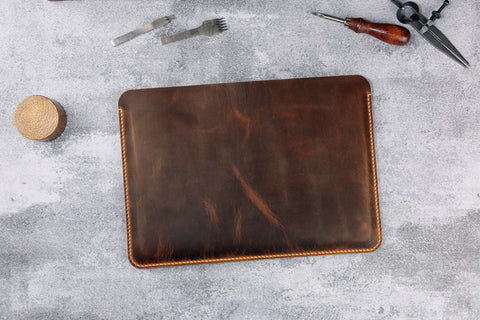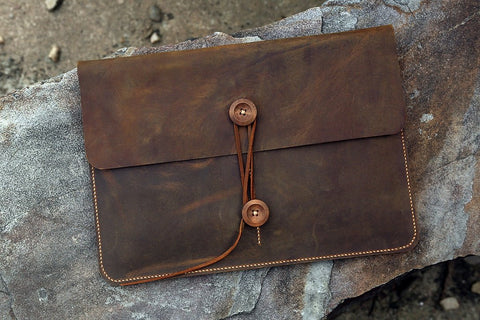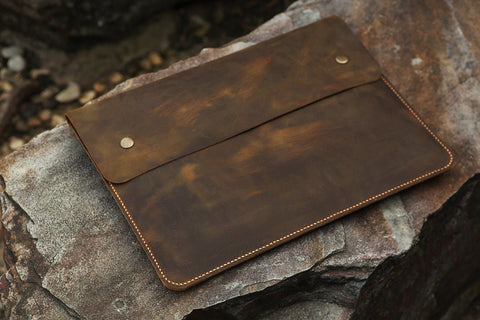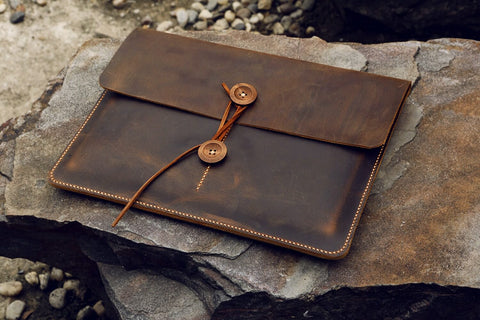The Development History of Leather Art
Introduction:
From the ancient trails of the Silk Road to the bustling streets of modern metropolises, the art of leather has woven its way through the tapestry of human history, transcending time, cultures, and civilizations. Leather, more than just a material, has been a canvas for human expression, a testament to artisanal skill, and a mirror reflecting societal evolution. In this exploration, "The Development History of Leather Art," we embark on a fascinating journey that traverses continents and epochs, delving into the intricate world of leather art and its profound impact across various dynasties in Eastern and Western countries.

Our narrative begins in the rugged landscapes of prehistoric societies, where the primal need for protection and warmth first transformed animal hides into rudimentary leather garments. As we traverse through the annals of history, we witness the material's metamorphosis from a mere utility to a symbol of status, power, and artistic expression. From the intricate stitching of the Qinghai Numuhong culture to the ornate leather teapots of the Song and Liao dynasties, and from the delicate parchments of medieval Europe to the elaborate leather carvings of the Renaissance, each chapter of this story unveils how leather art has been intricately tied to the cultural, religious, and economic fabrics of societies.
What is leather art?
Leather art, a vibrant expression of creativity, showcases the evolution of leather art techniques from traditional leather carving, round carving, and high relief to innovative cross-disciplinary forms. This artistic form, thriving particularly in China, highlights the historical leather dyeing and ancient leather working tools, reflecting a journey from exclusivity among the aristocracy to widespread use in home design, product design, and artistic creation. The impact of silk road on leather trade has also contributed to its diversified forms and global appreciation, marking the history of leather art in ancient civilizations.
How the fur was used in prehistoric society?
The utilization of fur in prehistoric society represents the earliest learning about leather history, where primitive ancestors used animal fur for clothing. This necessity led to the innovation of leather tanning techniques, making fur and skin durable, soft, and flexible, a testament to the history of leather art and its foundational role in human development. Since raw hides were prone to rot and deteriorate, they developed a method to make the fur and skin more durable and long-lasting: by continuously striking the raw hides with stones, they made the fur and skin soft and flexible.

Development of Leather Art in Eastern countries
The Qinghai Numuhong culture underscores traditional leather decoration and sewing techniques, signifying the transformation of fur from practical use to a decorative element. The unearthed artifacts include shoes made with thicker leather for the soles and thinner leather for the boot uppers. At the tip of the boots, a piece of fur is sewn on as decoration, showing the transformation of fur from a practical material to a decorative one, and also reflecting people's pursuit of beauty. In China, The Zhou Dynasty established a system highlighting leather's societal importance, integrating leather bookbinding history and the evolution of leather art techniques across dynasties. a system of 'gold, jade, leather, craftsmanship, and stone' officials was established, which clearly shows the importance of leather materials in society at that time.These periods showcased ancient leather craftsmanship through religious leather art, leather teapots, and leather carved thangkas, illustrating the comparative leather art East vs West.

The Use of Leather in Eastern Countries during the Qin and Han Dynasties
In China ,The Qin and Han dynasties exemplified nomadic tribes' leather products, with clothing, headgear, fur, and long boots as staples in daily life. the leather products of the nomadic tribes on the Qinghai Tibet Plateau today were the most exemplary.The Sui and Tang dynasties further refined leather processing methods, embedding primitive religious culture into religious props and painting on cow and sheepskin, marking a significant chapter in the history of leather art in ancient civilizations.Under the influence of primitive religious culture, religious props such as painting on the skin of cows and sheep, carving and recording divination and sacrificial activities, and processing religious activities emerged one by one.

The Use of Leather in Eastern Countries during the Song and Liao Dynasties
The Song and Liao dynasties popularized the "leather teapot", a symbol of aesthetic achievement and the intricate relationship between function and form in traditional leather techniques.It has a flat and straight body, a plump lower part, and a curved appearance on both sides of the pot, showcasing the aesthetic height of the time.

The Use of Leather in Eastern Countries during the Yuan,Ming and Qing dynasties
During the Yuan Dynasty, Tibet was under the jurisdiction of the Central Dynasty, and therefore had close cultural exchanges with the Yuan Dynasty in various aspects. Its clothing was also greatly influenced. On clothing, shoes, and hats, there are exquisite leather carved patterns, which are both beautiful and practical, and serve as decoration.
During the Ming and Qing dynasties, with the rise and spread of Tibetan Buddhism, leather painted thangkas and leather carved thangkas emerged. This type of thangka often uses sheepskin, cowhide, deer skin, and tiger skin as the canvas for painting, with a very small portion using human skin as the canvas. And the Dharma skin must be a highly practiced monk who appears as Avalokitesvara Bodhisattva and White Tara when he passes away, in order to be used for drawing.This era saw the proliferation of Tibetan Buddhism and the emergence of leather painted thangkas, using sheepskin, cowhide, deer skin, and tiger skin, showcasing the DIY traditional leather crafts and religious leather art, reflecting deep cultural exchanges and artistic innovation.


The development of leather art has gone through a long process, from emphasizing practicality to increasing decoration to pure aesthetics, accumulating rich experience in craftsmanship and craftsmanship, and becoming an important reference for today's leather art innovation.
The Development of Leather Art in Western Countries
The Complete Collection of Leather Carving Crafts by Kazuko Yansaka offers insight into Western leather craftsmanship's development, tracing back to the Stone Age and spanning through the Industrial Revolution. This journey through early European leather art, Native American leather making techniques, and the rise of Western leather carving technique highlights the comparative leather art East vs West, illustrating a rich tapestry of leather art history across continents.
The use of leather goods in early society
As early as the Stone Age, humans learned to cover themselves with animal skins for warmth. Around 1450 BC, records of leather processing were found on reliefs in Egypt, and the oldest surviving leather belt shoes were found in Egyptian tombs. In the ruins of the famous ancient Italian city of Pompeii, archaeologists have discovered that there were leather factories in ancient Greece and Rome that extensively manufactured daily necessities such as clothing, weapons, and shoes, and the decorative techniques were already quite advanced.

The Development of Leather in Early Europe
In the Middle Ages, the techniques of carving and rubbing had been used, and leather had also been applied to book binding. People wrote on parchment, which was called parchment paper. In the 11th to 15th centuries, China and Persia developed complex leather techniques, including embossing and carving, which were introduced by Arabs to Italy, Germany, France, England, and other countries. In 1492 AD, European culture was introduced to the Americas, and leather craftsmanship was also introduced to the Americas through the Spanish. From the 16th century to the Renaissance period in the 17th century, leather craftsmanship was incorporated into painting decoration, creating beautiful books and other works. In the 18th century, the Industrial Revolution emerged, giving rise to scientific research in leather manufacturing. French chemists developed a method for tanning plant-based leather. Especially in the 19th century, German chemists invented the chrome tanning process and improved related machines, laying the foundation for today's leather industry. On the other hand, Native Americans in the United States used their unique leather making techniques to make leather items such as horses and clothing.

The prevalence of leather patterns in Europe
Between 1640 and 1650, the orthodox European style leather craftsmanship underwent changes in decorative patterns due to the use of delicate plants from the New World combined with vine patterns, and various techniques emerged. This became the most representative decoration of Western cowboy horses and belts. The Western leather carving technique involves carving beautiful patterns onto leather. It was not until the 20th century that leather carving became a favorite among American men. This skill was introduced to Taiwan in the 1950s and later to mainland China from Taiwan.











